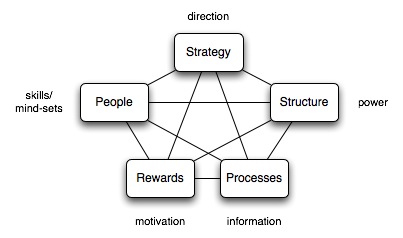 In part II and III of this series we discussed the Common Information and Canonical Models. Because MDM is a business project we need to establish of a common set of models that can be referenced independent of the technical infrastructure or patterns we plan on using. Now it is time to introduce the Operating Model into the mix to communicate how the solution will actually be deployed and used to realize the benefits we expect with the business in a meaningful way.
In part II and III of this series we discussed the Common Information and Canonical Models. Because MDM is a business project we need to establish of a common set of models that can be referenced independent of the technical infrastructure or patterns we plan on using. Now it is time to introduce the Operating Model into the mix to communicate how the solution will actually be deployed and used to realize the benefits we expect with the business in a meaningful way.
This is the most important set of models you will undertake. And sadly not accounted for in practice “in the wild”, meaning rarely seen, much less achieved. This effort describes how the organization will govern, create, maintain, use, and analyze consistent, complete, contextual, and accurate data values for all stakeholders.
There are a couple of ways to do this. One interesting approach I have seen is to use the Galbraith Star Model as an organizational design framework. The model is developed within this framework to understand what design policies and guidelines will be needed to align organizational decision making and behavior within the MDM initiative. The Star model includes the following five categories:
Strategy:
Determine direction through goals, objectives, values and mission. It defines the criteria for selecting an organizational structure (for example functional or balanced Matrix). The strategy defines the ways of making the best trade-off between alternatives.
Structure:
Determines the location of decision making power. Structure policies can be subdivided into:
– specialization: type and number of job specialties;
– shape: the span of control at each level in the hierarchy;
– distribution of power: the level of centralization versus decentralization;
– departmentalization: the basis to form departments (function, product, process, market or geography).
In our case this will really help when it comes time to designing the entitlement and data steward functions.
 Processes:
Processes:
The flow of information and decision processes across the proposed organization’s structure. Processes can be either vertical through planning and budgeting, or horizontal through lateral relationships (matrix).
Reward Systems:
Influence the motivation of organization members to align employee goals with the organization’s objectives.
People and Policies:
Influence and define employee’s mindsets and skills through recruitment, promotion, rotation, training and development.
Now before your eyes glaze over, I’m only suggesting this be used as a starting point. We are not originating much of this thought capital, only examining the impact the adoption of MDM will have on the operating model within this framework. And more importantly identifying how any gaps uncovered will be addressed to ensure this model remains internally consistent. After all, we do want to enable the kind of behavior we expect in order to be effective, right? A typical design sequence starts with an understanding of the strategy as defined. This in turns drives the organizational structure. Processes are based on the organization’s structure. Structure and Processes define the implementation of reward systems and people policies.
The preferred sequence in this design process is composed in the following order:
a – strategy;
b – structure;
c – key processes;
d – key people;
e – roles and responsibilities;
f – information systems (supporting and ancillary);
g – performance measures and rewards;
h – training and development;
i – career paths.
The design process can be accomplished using a variety of tools and techniques. I have used IDEF, BPMN or other process management methods and tools (including RASIC charts describing roles and responsibilities for example), What ever tools you elect to use, they should effectively communicate intent and used to validate changes with the stakeholders who must be engaged in this process. Armed with a clear understanding of how the Star model works we can turn our attention to specific MDM model elements to include:
Master Data Life Cycle Management processes
– Process used to standardize the way the asset (data) is used across an enterprise
– Process to coordinate and manage the lifecycle of master data
– How to understand and model the life-cycle of each business object using state machines (UML)
– Process to externalize business rules locked in proprietary applications (ERP) for use with Business Rules Management Systems (BRMS) (if you are lucky enough to have one )
– Operating Unit interaction
– Stewardship (Governance Model)
– Version and variant management, permission management, approval processes.
– Context (languages, countries, channels, organizations, etc.) and inheritance of reference data values between contexts
– Hierarchy management
– Lineage (historical), auditability, traceability
I know this seems like a lot of work. Ensuring success and widespread adoption of Master Data Management mandates this kind of clear understanding and shared vision among all stakeholders. We do this to communicate how the solution will actually be deployed and used to realize the benefits we expect.
In many respects this is the business equivalent to the Technical Debt concept Ward Cunningham developed (we will address this in the next part on Reference Architecture) to help us think about this problem. Recall this metaphor means doing things the quick and dirty way sets us up with a technical debt, which is similar to a financial debt. Like a financial debt, the technical debt incurs interest payments, which come in the form of the extra effort that we have to do in future development because of the quick and dirty design choices we have made. The same concept applies to this effort. The most elegant technical design may be the worst possible fit for the business. The interest due in a case like this is, well, unthinkable.
Take the time to get this right. You will be rewarded with enthusiastic and supportive sponsors who will welcome your efforts to achieve success within an operating model they understand.
Pingback: Modeling the MDM Blueprint - Part V « Applied Enterprise Architecture
Pingback: Modeling the MDM Blueprint – Part VI « Applied Enterprise Architecture
What’s up, always i used to check website posts here in the early hours in the break of day, for the reason that i enjoy to gain knowledge of more and more.
My spouse and I stumbled over here from a different page and
thought I should check things out. I like what I see so now
i’m following you. Look forward to looking over your web page again.
Awesome Webpage, Continue the great work. thnx!